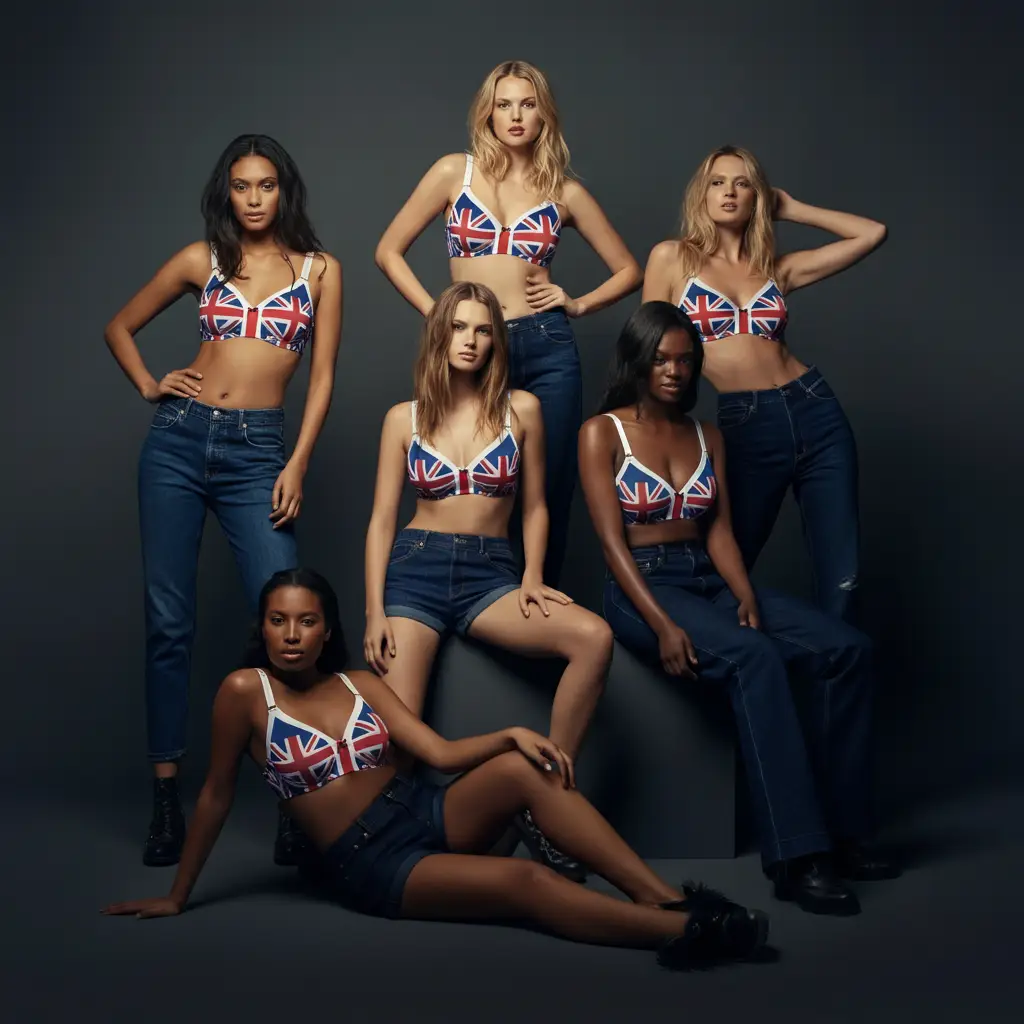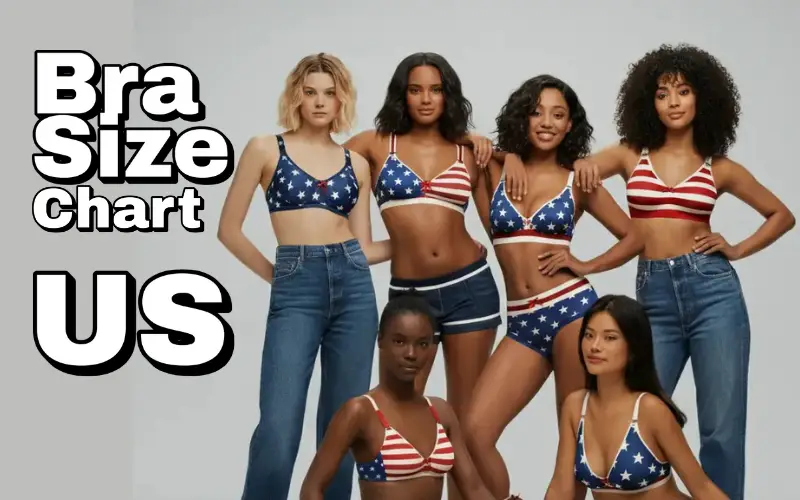Bra Size Chart US
The Complete Bra Size Chart US Guide: Find Your Perfect Fit

Did you know that up to 85% of women wear the wrong bra size? Finding your perfect fit shouldn’t feel like solving a complex puzzle, yet many women struggle with understanding the US bra sizing system. Whether you’re a first, time bra shopper or looking to update your current collection, this comprehensive bra size chart US guide will transform how you approach bra shopping.
The right bra can boost your confidence, improve your posture, and make you feel comfortable all day long. In this guide, you’ll discover how to measure yourself accurately, understand cup and band sizes, navigate international conversions, and troubleshoot common fitting issues. Let’s dive into everything you need to know about US bra sizing.
Understanding the US Bra Sizing System
The bra size chart US uses a combination of numbers and letters to indicate your perfect fit. The number represents your band size (the measurement around your ribcage), while the letter indicates your cup size (the difference between your bust and band measurements).
Here’s how the system breaks down:
- Band sizes typically range from 28 to 54 inches
- Cup sizes progress from AA through O and beyond
- Each cup size represents approximately one inch of difference
The US sizing system differs from other international standards, making it essential to understand these measurements.
How to Measure Your Bra Size at Home
What You’ll Need
- A soft measuring tape
- A well-fitting, non-padded bra
- A large mirror
A friend to help (optional but recommended)
Step by Step Measuring Process
Measuring Your Band Size:
- Stand straight in front of a mirror wearing your best fitting bra.
- Wrap the measuring tape around your ribcage, directly under your bust.
- Keep the tape snug but not thigh, you should be able to breathe comfortably.
- Take a deep breath in and out, allowing the tape to find its natural position.
- Record this measurement to the nearest quarter inch.
Measuring Your Bust Size:
- Keep the tape around your back at the same band level.
- Bring it around to measure at the fullest part of your breasts.
- The tape should lie flat against your back and cups.
- Don’t pull too tight, the measurement should feel snug but comfortable.
- Record this number to the nearest quarter inch.
Quick Measurement Tips.
- Measure yourself at the same time each day for consistency.
- Consider having measurements taken monthly, as body changes can affect size.
- Always measure while wearing a properly fitted, non-padded bra.
Decoding Cup Sizes: From A to Beyond
Cup sizes in the bra size chart US represent the difference between your bust and band measurements. Here’s how it works:
Difference (inches) US Cup Size.
| Difference (inches) | US Cup Size |
| Less than 1 | AA |
| 1 | A |
| 2 | B |
| 3 | C |
| 4 | D |
| 5 | DD/E |
| 6 | DDD/F |
| 7 | DDDD/G |
| 8 | H |
| 9 | I |
| 10 | J |
Understanding Larger Cup Sizes
Many women don’t realize that cup sizes extend far beyond D. If you’ve been wearing a 36D but experience spillage or discomfort, you might actually need a 34DD or 32F. The US bra sizing system accommodates cup sizes up to O and beyond, ensuring every woman can find her perfect fit.
Sister Sizing Explained
Sister sizes maintain the same cup volume while adjusting the band size. For example:.
- 34B = 32C = 36A (same cup volume, different band sizes).
- 36D = 34DD = 38C.
This concept helps when your exact size isn’t available or when you need slight adjustments for comfort.
Band Size Chart and What It Means
Your band size provides 80% of your bra’s support, making it crucial to get this measurement right. The band should feel snug on the loosest hook when new, allowing you to tighten it as the bra stretches with wear.
US Band Size Chart
| 28 | 28-29 |
| 30 | 30-31 |
| 32 | 32-33 |
| 34 | 34-35 |
| 36 | 36-37 |
| 38 | 38-39 |
| 40 | 40-41 |
| 42 | 42-43 |
| 44 | 44-45 |
Signs Your Band Size Is Wrong
Too Small:
- Leaves red marks or indentations.
- Feels uncomfortably tight.
- Causes a back bulge or spillage.
Too Large:
- Rides up your back.
- Feels loose even on the tightest hook.
- Provides inadequate support.
Common Bra Size Chart US Mistakes to Avoid
Mistake # 1: Adding Inches to Your Band Measurement.
Old fitting methods suggested adding 4-5 inches to your underbust measurement. Modern bra size charts recommend using your actual measurement for better support and comfort.
Mistake # 2: Assuming You’re a “Standard” Size.
Many women default to sizes like 34B or 36C without proper measurement. These might not be your true size – take the time to measure correctly.
Mistake # 3: Ignoring Size Variations Between Brands.
A 34C in one brand might fit like a 32D in another. Always try on bras or check individual brand sizing guides.
Mistake # 4: Not Considering Shape Differences.
Two women with the same measurements might need different styles based on breast shape. Consider whether you have:.
- Full on top or bottom.
- Wide or narrow-set breasts.
Projected or shallow shape.
International Bra Size Conversions
Shopping internationally or for international brands? Here’s how bra sizes chart US
US to UK Conversion:
- US: A B C D DD/E DDD/F.
- UK: A B C D DD E.
US to European Conversion:
- Band sizes: US 32 = EU 70, US 34 = EU 75, US 36 = EU 80.
- Cup progression remains similar through D, then varies.
Note: Always check specific brand conversion charts, as some companies use their own sizing systems.
Plus Size Bra Sizing in the US
The bra size chart US accommodates plus sizes with bands starting at 38 and extending to 54 or larger. Plus size considerations include:
Extended Size Ranges:
- Bands: 38-54+.
- Cups: D-O and beyond.
- Specialty retailers often carry extended ranges.
Plus Size Fitting Tips:
- Look for wider straps for better support.
- Consider full-coverage styles.
- Ensure proper band fit, it’s even more crucial for larger busts.
- Don’t be afraid of larger cup sizes.
Recommended Plus Size Brands:
- Elomi
- Goddess
- Cacique (Lane Bryant)
- Torrid
Specialty Bra Types and Sizing
Sports Bra Sizing.
Sports bras often use S/M/L sizing, but many brands now offer traditional sizing. For high-impact activities, stick with your measured bra size in the US for optimal support.
Maternity and Nursing Bras.
During pregnancy and nursing, your size may fluctuate frequently. Consider:
- Getting fitted during your second trimester.
- Choosing bras with room to grow.
- Remeasuring every few months.
Strapless and Special Occasion Bras.
These often run smaller in the band. Consider going up one band size and down one cup size for the same volume with better grip.
Signs You Need a New Bra Size
Your body changes over time, and your bra size US should adapt accordingly. Consider remeasuring if you experience:
Physical Changes:
- Weight loss or gain (even 10 pounds can affect size).
- Hormonal changes.
- Pregnancy or nursing.
- Age-related changes.
Comfort Issues:
- Straps digging into shoulders.
- Band riding up or rolling.
- Cups are gapping or spilling over.
- General discomfort throughout the day.
Visual Cues:
- Visible bra lines under clothing.
- Uneven breast shape under clothes.
- Back bulge or side spillage.
Experts recommend getting measured annually or after any significant body changes.
Professional Bra Fitting: When to Seek Help
While self-measurement works for many women, professional fitting can be invaluable. Consider professional help when:.
- You’re unsure about your measurements.
- You’re shopping for special occasion bras.
- You have unique fitting challenges.
- You’re exploring new brands or styles.
What to Expect:
Professional fitters will measure you and assess your shape, helping you understand how different styles work with your body. Many department stores and specialty lingerie shops offer this service.
Conclusion
Understanding the bra size chart US is your first step toward better comfort, confidence, and support. Remember that finding your perfect fit is a journey, not a destination. Your size may change over time, and different brands may require slight adjustments.
The key takeaways from this guide:
- Measure yourself regularly and accurately.
- Don’t be afraid of larger cup sizes or smaller band sizes.
- Consider your breast shape when choosing styles.
- Be open to trying different sizes across brands.
- Invest in professional fitting when needed.
Ready to transform your bra drawer? Start by measuring yourself using the techniques outlined in this guide. Your future self will thank you for taking the time to find bras that truly fit. Remember, the right bra isn’t just about size, it’s about how you feel when you’re wearing it.
Please take action today: grab a measuring tape, follow our step by step guide, and discover your true size using the bra size chart US. Your comfort and confidence are worth the investment in properly fitting undergarments.







